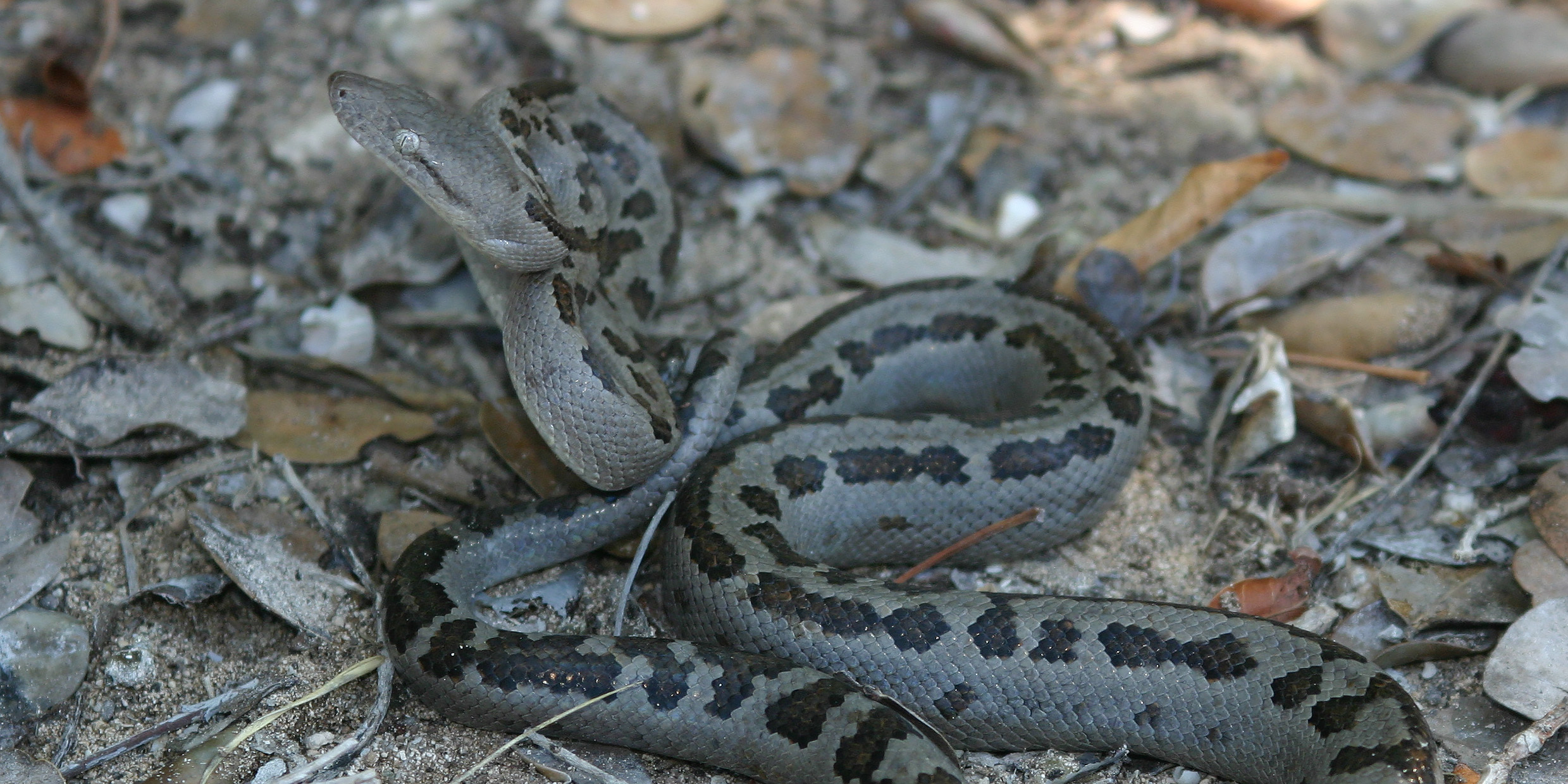Originally published 30 March 1998
EXUMA, Bahamas — This is a story about extinction — up close and personal.
I stopped by the auto repair shop in George Town, this island’s principal settlement, to get a new air filter for my car. The part was not to be had, but the manager invited me behind the shop to see what he had just killed.
Stretched on the ground was the largest snake I had ever seen in the wild, a full-grown Bahamian boa constrictor, or fowl snake, six-feet long and as thick as my leg, glistening with white scales. A fishing trident impaled its body and its head had been crushed with a stone.
Since I first came to this island 10 years ago, I have been looking for a boa. Every local person has stories of the snake. It has a kind of mythic reputation, dark and demonic. This venomous animal reportedly gobbles up pets, devours chickens, takes babies from the cradle, steals milk from the baby’s bottle, and is able to hypnotize people, or so I’ve been told. On many walks on back roads and forest paths I kept my eyes open for the snake, unsuccessfully.
Now here was the Great White Serpent right in the middle of George Town. It had sought out human habitation, because that’s where it finds its favorite food: rats and mice.
In fact, ecologists agree that the Bahamian boa is of great benefit to humans, and is unjustly, even hysterically, persecuted. It is non-poisonous and generally harmless (those stories of babies snatched from cradles are pure bunkum), and it keeps down the rodent population.
The naturalist David Campbell writes: “In the span of its lifetime [which, barring any premature encounters with man, may last decades], a fowl snake can consume thousands of destructive rats and mice. But it receives in payment for its services the almost universal loathing of its benefactees.”
Don’t tell that to the Bahamians. Around here, a discovered boa is a dead boa. And who can blame the snake’s killers. If I found one of these jumbo reptiles slithering in my backyard, I’d be inclined to murder, too.
The Bahamian boa constrictor is descended from South American ancestors that invaded the West Indies during the last ice age when sea levels were lower and islands were connected by land bridges (the entire Bahamian bank was dry). When the sea rose about 10,000 years ago, the boas where pressed onto islands, where they have evolved on their own ever since. Within the Bahamas, there are three species and eight subspecies of the boa constrictor distributed on all of the major islands.
The snake has now become rare on many islands, and in a few places is near extinction. Along with native persecutors, European and American collectors have played a part in its decline. It is on the list of threatened species of the 1973 Convention on the International Trade in Endangered Species.
As I stooped to examine the reptilian carcass behind the auto parts store, I knew I was witnessing a single tiny part of a global crisis. The diversity of life on Earth is more dangerously threatened now than at any time in the past 65 million years.
The Paleozoic Era of Earth history ended 230 million years ago with a catastrophe of yet uncertain nature that obliterated the majority of species on the planet. The Mesozoic Era was terminated 65 million years ago by an asteroid impact that wiped out the dinosaurs and countless other creatures. Many other extinction events have punctuated the history of life.
Today, humans are managing to do with thoughtlessly-applied technology what previously required colossal and capricious natural events: asteroid impacts, nearby supernova explosions, continent-shattering volcanic eruptions.
The present extinction crisis will usher in a yet-to-be-named era dominated by a single species, Homo technologicus, living in haughty isolation on a ravaged planet.
In a recent issue of Science, Harvard biologist Stephen Jay Gould wrote: “In our universe of natural law, complex and adaptive systems can only be built sequentially. We can only reach our pinnacles by laborious steps, but destruction can occur in a minute fraction of the building time, and can often be truly catastrophic. A day of fire destroyed a millennium of knowledge in the library of Alexandria, and centuries of building in the city of London. The last blaauwbock of southern Africa, the last moa of New Zealand, perished in a momentary blow or shot from human hands, but took millions of years to evolve.”
Gould calls this the Great Asymmetry: Rich structural complexity that requires centuries, or eons, to build can be destroyed in moments. Homo sapiens is not an evil or destructive species, he says, but science and technology put a power in our hands that can be used to devastating effect.
Most Bahamians, indeed most humans, won’t shed a tear if the mean-looking fowl snake becomes extinct. But we should recognize that every creature on Earth is part of a web of wholeness that stands in danger of unraveling with the unthinking removal of a sufficient number of single strands.



